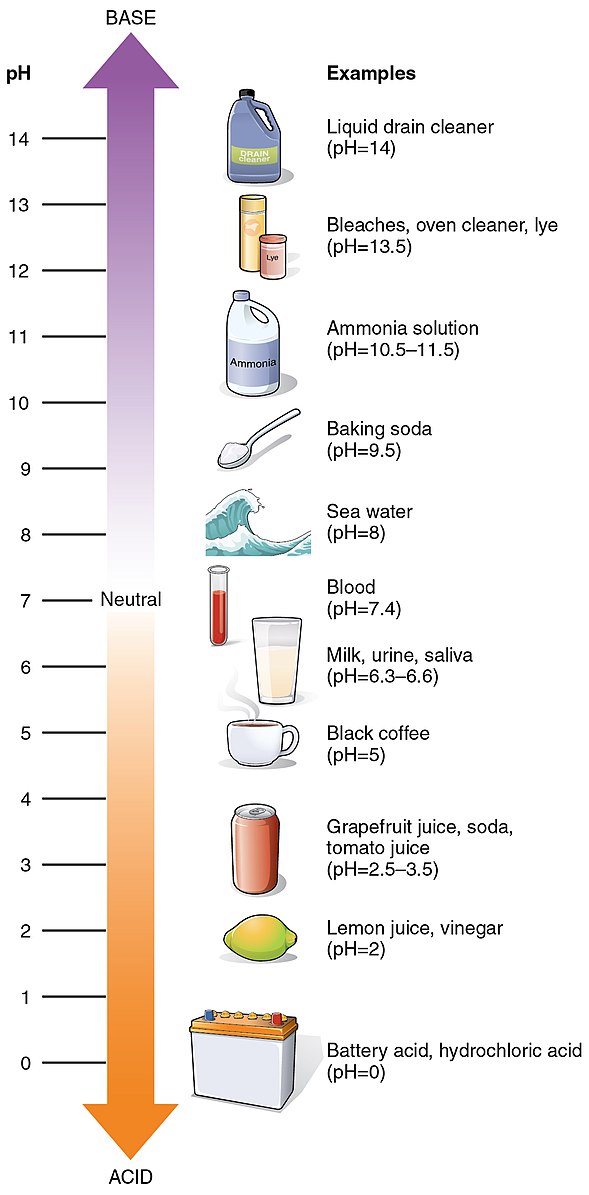Sodium perchlorate, NaClO4, is a highly soluble salt that forms a neutral solution with a pH around 7 when dissolved in water. However, the pH of a sodium perchlorate solution can be adjusted to specific values, such as 2.5 or 3.0, for various applications. Understanding the pH of sodium perchlorate in water is crucial for its effective use in various industries, including molecular biology, chromatography, and medicine.
Understanding the Neutral pH of Sodium Perchlorate in Water
Sodium perchlorate is a salt formed by the combination of a strong acid (perchloric acid, HClO4) and a strong base (sodium hydroxide, NaOH). When dissolved in water, the strong acid and strong base completely ionize, resulting in a neutral solution with a pH around 7. This is because the resulting ions (Na+ and ClO4-) do not affect the pH of the solution.
Adjusting the pH of Sodium Perchlorate Solutions
 Image source: OpenStax College
Image source: OpenStax College
While sodium perchlorate solutions typically have a neutral pH, the pH can be adjusted to specific values, such as 2.5 or 3.0, for specific applications. This is often done in chromatography, where a gradient of sodium perchlorate solutions with different pH values is used for gradient programming.
To adjust the pH of a sodium perchlorate solution, additional chemicals can be added to the solution. For example, adding an acid, such as hydrochloric acid (HCl), can lower the pH, while adding a base, such as sodium hydroxide (NaOH), can increase the pH.
Applications of Sodium Perchlorate Solutions with Specific pH Values
Sodium perchlorate solutions with specific pH values have various applications, including:
- Molecular Biology: In molecular biology, sodium perchlorate solutions with a pH of 2.5 or 3.0 are used for DNA extraction and hybridization reactions.
- Chromatography: In chromatography, sodium perchlorate solutions with different pH values are used for gradient programming, which helps separate and purify various compounds.
- Medicine: In medicine, sodium perchlorate solutions are used to block iodine uptake before the administration of iodinated contrast agents in patients with subclinical hyperthyroidism.
Production and Safety Considerations
Sodium perchlorate is produced by the anodic oxidation of sodium chlorate (NaClO3) in an acidic or alkaline medium. The resulting solution contains sodium perchlorate, which can be purified and dried to obtain the solid form.
Regarding safety, sodium perchlorate has a low acute toxicity, with an LD50 of 2-4 g/kg for rabbits. However, it can cause irritation to the eyes, skin, and respiratory tract, and prolonged exposure can lead to adverse health effects. Therefore, it is essential to handle sodium perchlorate with care and follow safety guidelines when using it.
Contaminants and Impurities in Sodium Perchlorate Solutions
When working with sodium perchlorate solutions, it is crucial to consider the purity of the reagent and the presence of any contaminants or impurities. Common impurities in sodium perchlorate solutions include heavy metals, chloride ions, and sulfate ions. These impurities can affect the pH and other properties of the solution and may require additional purification steps.
Conclusion
The pH of sodium perchlorate in water is an essential factor to consider when using this salt in various applications. While sodium perchlorate solutions typically have a neutral pH around 7, the pH can be adjusted to specific values, such as 2.5 or 3.0, for specific applications. Understanding the pH of sodium perchlorate solutions and the factors that can affect it is crucial for ensuring the effectiveness and safety of its use in various industries.
